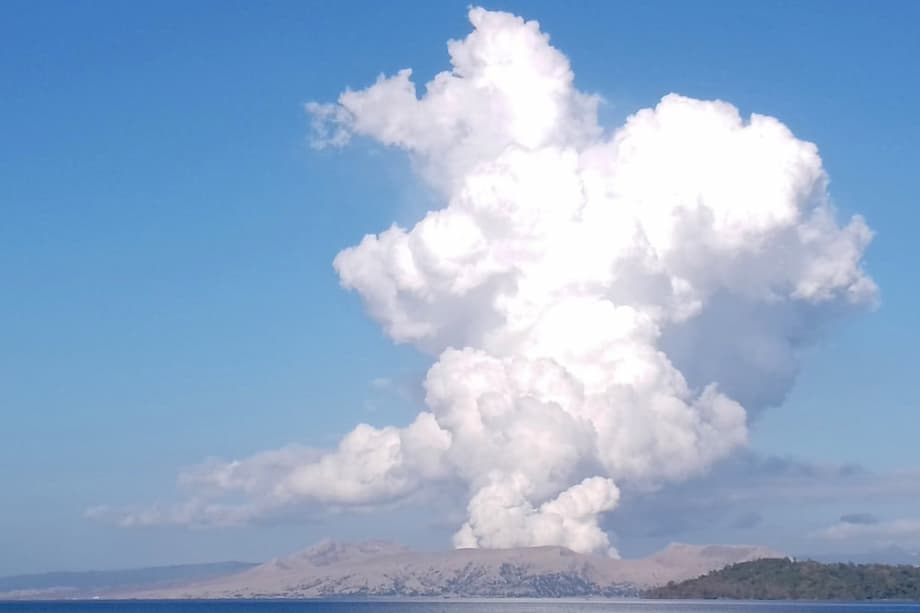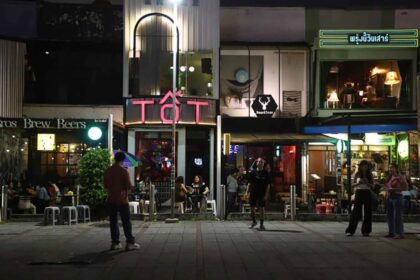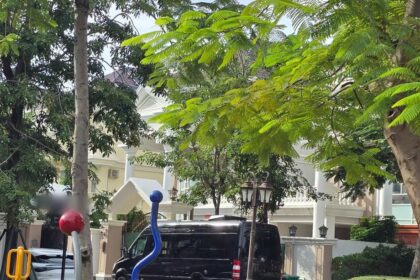Inside the search at Lake Taal
South of Manila, divers are probing the dark waters of Lake Taal in search of answers to one of the Philippines most unsettling crime stories in years. The government has mounted a methodical search for the remains of at least 34 missing cockfighting enthusiasts, men who vanished in 2021 and 2022 amid allegations of match fixing, police collusion, and orders from powerful gambling figures. The Department of Justice confirmed that teams have recovered sacks and a plastic bag containing what appear to be burned human bones from the lake, a volcanic crater famed for its beauty and feared for its depth and unpredictability. Forensic teams are conducting examinations and DNA testing, a critical step before any remains can be linked to the missing.
- Inside the search at Lake Taal
- Who are the missing sabungeros
- Allegations against a gambling power broker
- Were rogue police involved
- How online cockfighting exploded during the pandemic
- What search teams face under the volcanic waters
- Evidence recovered so far
- Families push for answers and accountability
- Could the case connect to the drug war
- What to Know
Authorities say the investigation gained momentum after a detained suspect, later turning witness, described a murder scheme and pointed searchers to spots in Lake Taal, a body of water roughly 230 square kilometers in area and hundreds of feet deep. Justice Secretary Jesus Crispin Remulla has directed a multi agency effort involving the Philippine National Police, the Philippine Coast Guard and outside specialists. Fifteen police officers have been placed under scrutiny, with officials citing evidence and witness statements that suggest rogue lawmen could have taken part in the abductions and killings. The case blends organized gambling, alleged police corruption and a lake that may have become an underwater cemetery.
While investigators are cautious, every small discovery matters. Officials asked Japan for technical assistance to map the lake bed and support diving operations. The Philippine Coast Guard has deployed technical wreck divers to work in challenging conditions marked by poor visibility, sudden currents and variable depth. Families of the missing, who have waited years for news, are watching the operation closely and pressing for confirmation, accountability and the return of remains for proper burial.
Who are the missing sabungeros
The missing men are known locally as sabungeros, a term for people who work in or around cockfights. They include organizers, bettors, agents and security staff tied to a livestreamed betting boom that surged during the pandemic when in person events were restricted. Reports show that the 34 cases occurred between April 2021 and January 2022, with several last seen at or around major venues in Metro Manila and neighboring provinces. The disappearances followed allegations of match fixing and cheating schemes, including claims that some participants diverted online wagers to sham portals or manipulated contests from behind the scenes.
Evidence surfaced in pieces. Abandoned cars were found. Cash withdrawals appeared on accounts linked to the missing. Witnesses described men forced into vans and driven away. A group of security personnel from a Manila arena emerged as early suspects and were later charged in connection with kidnappings. Families organized vigils and appeals that kept the cases in the public eye even as leads ran cold. By mid 2025, the narrative shifted as a whistleblower offered to cooperate and detailed a grim account that pushed authorities to focus on Lake Taal.
Allegations against a gambling power broker
The most explosive claims came from Julie “Dondon” Patidongan, also known as “Totoy,” a security guard who was among those previously accused in the kidnappings. He went on national television, then met with investigators, to assert that he and others strangled victims with wire, sealed them in sacks, weighted them with sandbags and dumped them into Lake Taal. He accused businessman Charlie “Atong” Ang, a prominent figure in licensed gambling and online cockfight streaming, of ordering the killings. He also mentioned actress and businesswoman Gretchen Barretto as an investor in Angs operations. Both Ang and Barretto have publicly denied the allegations, and Ang has filed a defamation complaint against the whistleblower. Prosecutors emphasize that all claims will be tested in court.
In an interview, Patidongan said the men would not be found alive and that far more than 34 victims might lie in the lake. He described the killings as part of a broader underworld economy tied to online betting, and said he would cooperate with families to identify those responsible.
“How can they survive when they were already buried in Taal Lake?”
Authorities confirm that his testimony aligns with some evidence gathered across multiple scenes and dates, but they stress that forensic identification is essential. No court has yet determined who ordered the crimes or how many people were killed. Investigators have filed or prepared criminal complaints against several suspects, including those identified by the whistleblower, while continuing to seek corroboration, physical evidence and additional witnesses.
Were rogue police involved
National police leadership has acknowledged an active probe of officers suspected of moonlighting for gambling interests. According to officials, a cohort of 15 police officers is under investigation and on restricted duty in connection with the disappearances. Investigators are reviewing phone records, movements and the use of vehicles and equipment to determine whether sworn officers acted as hired abductors and executioners for a gambling operator that profited from livestreamed cockfights.
National Police Chief Gen. Nicolas Torre III, speaking about the case, condemned what the witness described. He said the force would pursue any member implicated by evidence.
“Savage and unacceptable.”
The cases echo long standing concerns about the ability of criminal syndicates to recruit or coerce members of law enforcement. Internal affairs investigators and prosecutors are working in parallel, a delicate process that requires safeguarding evidence without compromising criminal cases that could take months or years to complete.
How online cockfighting exploded during the pandemic
Cockfighting, or sabong, has deep cultural roots in the Philippines and remains legal in its traditional form under local rules. The explosion came when operators took the contests online during pandemic lockdowns. Known locally as online sabong or e sabong, livestreams drew vast audiences and an even larger pool of bettors. In 2022, a Senate inquiry heard that daily bets ran into the billions of pesos and that license fees generated around 620 million pesos per month for the government. The money moved quickly, with mobile apps and third party agents facilitating wagers in real time.
That growth came with a shadow. Investigators, whistleblowers and insiders have described loopholes that allowed rigged outcomes or fake betting channels. One scenario raised by authorities involves siphoning wagers away from legitimate sites to copycat portals that captured bets without paying the operator or the winners. Another is match manipulation by weakening a favored rooster or tampering with fight setups so that insiders could bet against it. The missing sabungeros were suspected of some form of cheating by rival groups, according to officials.
Public pressure reached the presidential palace after the disappearances. Then president Rodrigo Duterte ordered a halt to e sabong in 2022, citing social costs from addiction and crime. Unlicensed online streams persisted, but the ruling throttled the legal industry. Traditional cockfighting resumed in arenas, and the broader gambling sector remained a political flashpoint in a predominantly Catholic country where church leaders have denounced online betting as a social ill.
What search teams face under the volcanic waters
Lake Taal is a challenging crime scene. It is a volcanic crater lake with a reputation for sudden shifts in weather and water conditions. Depths reach more than 170 meters (about 560 feet) in places. Currents change with wind and rain, visibility can fall to nearly zero, and the lake chemistry near the volcano can complicate preservation of remains. The area is also prone to earthquakes and ash emissions that can disrupt fieldwork and foul equipment.
Justice Secretary Remulla said the government would use science based methods and outside help to survey the lake floor, mark priority sites and retrieve remains safely. He underscored the need for expert teams capable of deep and technical diving, along with remote mapping tools that can sweep large areas for anomalies.
“We will need technical divers to determine the veracity of the information.”
In separate remarks, Remulla framed the stakes in moral terms, urging anyone with knowledge to participate in the search for truth and accountability.
“Our very soul as Filipinos is at stake here. We must not allow money to become the only master of the Filipino people.”
Officials say they have requested assistance from Japan for high resolution lakebed mapping and related technologies. Local units have already completed initial site assessments to prepare for longer and deeper dives once weather windows open and equipment is in place. The approaching typhoon season adds urgency, since storms can stir up sediment and scatter potential evidence.
Evidence recovered so far
Investigators say the first retrievals provide promising leads but not definitive answers. A white sack and a plastic bag retrieved from the lake contained fragments that appeared to be burned human bones. Animal remains were also found in the area. Forensic teams will determine which samples are human, then attempt to extract DNA that can be compared with relatives of the missing. Only after matching profiles can authorities attribute remains to specific individuals.
The method alleged by the witness aligns with what searchers expect to find: bodies or fragments sealed in sacks and weighted to sink. Water, silt and time degrade tissue and bone. Fire, if used before disposal, further complicates identification. Divers must work slowly, marking sites, bagging material and cataloging locations. Authorities say any remains linked through DNA will support criminal cases and finally allow families to claim their dead.
Families push for answers and accountability
Relatives of the missing have sustained a public campaign that kept these cases in the headlines, organizing prayer rallies and pressing officials for updates. Many believe their loved ones were punished for petty cheating while the powerful moved on unscathed. They want perpetrators charged, complicit officers removed and industry figures who enabled the crimes named in court records. They also want transparent updates from the lake search and a clear plan for custody of evidence and chain of identification.
Justice department officials say the investigation is active on multiple fronts. Spokesman Dominic Clavano told reporters the work is advancing and that it will continue even if the current lead goes cold, a nod to the many separate abduction events that likely make up the case. Courts have also weighed in. The Court of Appeals nullified a lower court decision that had granted bail to some suspects, a move welcomed by families who argue that too many involved in the abductions have remained free.
Could the case connect to the drug war
Justice Secretary Remulla has raised the possibility that organized groups behind extrajudicial killings during the anti drug campaign intersected with criminal work for gambling operators. The theory, still being examined, is that squads accustomed to contract work for murders might also have been hired to silence suspected cheats in online betting. Human rights advocates say the pattern of forced disappearances and the alleged involvement of law enforcers track with abuses documented during the previous administrations drug war. The International Criminal Court continues to scrutinize those years, while Philippine authorities conduct their own inquiries.
The overlap remains unproven, and investigators say they are focused first on locating remains and building solid cases that can survive court scrutiny. Still, the suggestion underscores how illicit markets can attract the same violent actors. If that link is established, the cases at Lake Taal could reshape how authorities approach both gambling and organized violence in the country.
What to Know
- Authorities are searching Lake Taal for remains linked to 34 missing cockfighting enthusiasts who vanished in 2021 and 2022.
- A whistleblower claims victims were strangled with wire, sealed in sacks, weighted and dumped in the lake.
- Fifteen police officers are under investigation for alleged involvement, and several civilian suspects face complaints.
- Businessman Charlie “Atong” Ang and actress Gretchen Barretto deny allegations and have not been convicted of any crime.
- Early dives retrieved sacks and a plastic bag with what appear to be burned bones, with DNA testing now underway.
- Justice officials requested Japanese technical aid for lakebed mapping and deep diving support.
- Online cockfighting surged during the pandemic, generating billions of pesos in daily bets before it was banned in 2022.
- Families of the missing demand accountability, transparent search updates and the return of remains for burial.
- Investigators are examining potential links between the case and contract killers associated with past anti drug operations.












